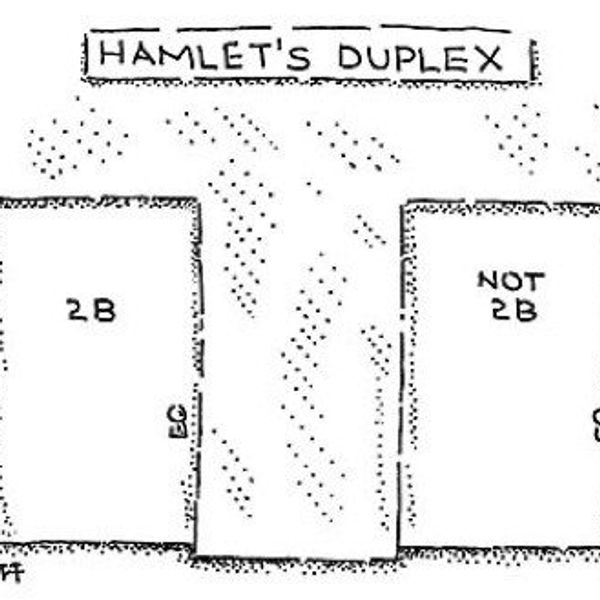“No matter how heinous the crime, if society can protect itself without ending a human life, it should do so.” -A Culture of Life and the Penalty of Death
The death penalty has been a controversial topic of discussion in the media lately, especially after the trial involving the Charleston shooter, Dylann Roof. Many are outspoken about how he should receive the death penalty for his actions, but very few are speaking against him receiving the death penalty, which I find to be ridiculous. Ask anyone I know, and they will tell you right off the bat that I am extremely opposed to the death penalty being dealt here in the United States. Don't get me started about the death penalty, because I will be talking for hours. In fact, I'm so passionate about this topic, I had an article published about it and I went to a national social justice conference in Washington DC and gave a presentation about it.
I took a Social Justice class this past semester. Everyone at my college is required to take it. In the beginning of the course, I wasn't entirely happy about the whole situation. I asked myself why I was taking a course like this when I already knew this stuff. At the end of the course, I chose to write about the death penalty, using insight I gained from the class.
Let me just start off by apologizing for the hard read this week. I'm sharing my paper with you, and since my major is Theology, it's heavily academic in some places. If you have any questions, just comment below.
A consistent life ethic is a commitment to the protection and preservation of all life- from womb until tomb. Capital punishment, also called the death penalty, is the ultimate form of punishment for the most heinous of crimes in the United States. This does not make it just, as “humane” as many claim it to be. However, because it is the taking of a life and the disregard for the sanctity of a human life, capital punishment is a violation of a human being’s inherent dignity and goes against a consistent life ethic. In the United States especially, capital punishment is unnecessary and should be abolished altogether.
The Pope’s Call For Abolition
In his address to Congress during his visit to the United States, Pope Francis openly advocated for the abolition of capital punishment through embracing a consistent life ethic. “The Golden Rule reminds us of our responsibility to defend and protect human life at every stage of development.”(Pope's Address to Congress) Pope Francis has advocated for this since the beginning of his time in office because this conviction has led him to “advocate at different levels for the global abolition of the death penalty.” (Pope's Address to Congress) Francis elaborates on exactly why he is in support of abolition of capital punishment and is
“Convinced that this way is the best, since every life is sacred every human person is endowed with an inalienable dignity, and society can only benefit from the rehabilitation of those convicted of crimes.” (Pope Francis)
Pope Francis also supported the USCCB on their efforts to abolish capital punishment in the US.
“Recently my brother bishops here in the United States renewed their call for the abolition of the death penalty. Not only do I support them, but I also offer encouragement to all those who are convinced that a just and necessary punishment must never exclude the dimension of hope and the goal of rehabilitation.”4
The USCCB’s efforts to bring about the abolition of the death penalty include the writing of a pastoral letter called “A Culture of Life and the Penalty of Death”. In this letter, the bishops explain just why capital punishment cannot and should not be used.
"Each of us is called to respect the life and dignity of every human being. Even when people deny the dignity of others, we must still recognize that their dignity is a gift from God and is not something that is earned or lost through their behavior. Respect for life applies to all, even the perpetrators of terrible acts. Punishment should be consistent with the demands of justice and with respect for human life and dignity." (emphasis in original)
What Makes It So Bad And Why?
Both Thomas Aquinas and the Catechism state that the state has the right to exact capital punishment. However, neither the Catechism nor Aquinas nor any other Church text or document gives the state an unlimited right to make laws prescribing capital punishment and to execute them accordingly. If there is to be a just capital punishment law, there needs to be proportion between the taking of the condemned’s life and the benefit expected to the common good of all. After all, it is taught that
Assuming that the guilty party’s identity and responsibility have been fully determined, the traditional teachings of the Church does not exclude recourse to the death penalty, if this is the only possible way of defending human lives against an unjust aggressor. (Catechism 2267)
Let’s look back at that again, “if this is the only possible way of defending human lives against an unjust aggressor”. Then, take a look at the prison system here in the United States. One can see two things. One, that we have a prison system that is much more sophisticated than that of 200 years ago. Two, our prison system is much more sophisticated than those in underdeveloped countries where capital punishment would need to be implemented to ensure the safety of the citizen of that country. The United States has the capability to render a criminal completely capable of doing further harm and should use them.
If, however, non-lethal means are sufficient to defend and protect people’s safety from the aggressor, authority should limit itself to such means, as these are more in keeping with the dignity of the human person.7
The concept of capital punishment has even attracted the attention of the Pope.
“Today, in fact, as a consequence of the possibilities which the state has for effectively preventing crime, by rendering one who has committed an offense incapable of doing harm--without definitively taking away from him the possibility of redeeming himself--the cases in which the execution of the offender is an absolute necessity ‘are very rare, if not practically non-existent.’” (Catechism 2267)
Violation of Catholic Social Teaching
There are a total of seven to ten principles of Catholic Social Teaching9, and I have found that capital punishment violates three of the aforementioned principles: the preservation of human dignity, care and stewardship of creation, and options for the poor and vulnerable.
Preservation of Human Dignity
This is the principle that all life is sacred and that the dignity of the person is inherent. This is the core for a moral vision of society. The USCCB writes that “Our belief in the sanctity of the human life and the inherent dignity of the human person is the foundation of all the principles of our social teaching.” The way that this principle is violated is through the disregard of the sanctity of the criminal’s life in retaliation for the criminal’s disregarding the sanctity of the life of the victim.
The United Nations stated that all human beings have essential rights. In this list, it is said that each human being has the right not to be tortured and not to be killed.10When we take a look at the ways that capital punishment is done and how mistakes can be made, we realize that the death penalty is not only killing, but torturing as well, because extreme pain comes with these procedures (firing squad, hanging, gas chamber, lethal injection, and electric chair), the most common of which is lethal injection, which is used in all 31 or 32 states which implement capital punishment.
There is also a sense of racial disproportion in use of capital punishment. Here’s a breakdown of racial disproportion: According to the Death Penalty Information Center’s website, since 1976, there have been 1,434executions in the United States. Of the defendants executed, 8.4 percent have been Hispanic, 34.5 percent have been Black, 55.4 percent have been White, and 1.7 percent have been of other races.
Then, let’s look at the race of victims in death penalty cases. 7 percent are Hispanic, 1.5 percent are Black, 2 percent are other races, and 76 percent of victims are white.
Keeping these statistics in mind, let’s look at interracial murders. Murders with a white defendant and a Black victim have had an average of 31 persons executed. Murders with a Black defendant and a white victim have a much higher number of executions, falling 297 persons executed.11
Stewardship of Creation
This principle insists that we show respect for what or whomever we see as a creator by caring for our planet and the people in it. We are called to protect people and the planet. In order to do this, we need to live our faith (or lives in general, whatever the case may be) in relation to all creation. Both of these things are an environmental challenge that has fundamental ethical dimensions that cannot be ignored(or denied) which also applies to the use of capital punishment.
The environment is God's gift to everyone, and in our use of it we have a responsibility towards the poor, towards future generations and towards humanity as a whole. . . Our duties towards the environment are linked to our duties towards the human person, considered in himself and in relation to others. It would be wrong to uphold one set of duties while trampling on the other. 12
Something that sums it up nicely is this, written in an article for Life Matters Journal in February 2016:
Instead of protecting people and the planet by means that preserve life, our use of the death penalty teaches that it is only possible to protect people and the planet by means of killing.13
It’s been said that “an eye for an eye will make the world go blind” and killing because someone else kills is a definite example of this. Killing in retaliation is never considered caring for creation.
Another way that we can care for creation is to preserve the well-being of the condemned as well. Something that people tend to overlook is that being on death row is not something that is typically for the short term. Some people who are condemned to the death penalty are on death row for possibly twenty to thirty years before they are executed. Some die on death row before even being executed.
This is psychological torture on a person. One wouldn’t know when one is going to die, and their life is ended when another person says so. This person lives each day not knowing whether he or she will live to see the next day. The condemned’s life is determined by a person signing a paper. The paper that is signed can either be a stay of execution, an order of execution, or if the condemned person is lucky, a pardon may be issued. All of these things can be anxiety inducing and can torture someone psychologically.
Providing Options for the Poor and Vulnerable
The third and final violated principle of Catholic Social Teaching is providing options for those who are poor and vulnerable. The principle roots itself in a basic moral test, one that asks how we treat the most vulnerable members of society: How do you treat others? “Whatsoever you do to the least of those, you do to me.”14
Actually, contrary to what many believe, the vulnerable one in situations where capital punishment is used or is being considered is the condemned. We as human beings are very centered on getting even in response to the deaths of the victims of the heinous crimes committed by those condemned to death.
Even the condemned know that killing them is wrong too.
It is true that there are many different situations that require different ways of looking at a situation. However, one must put emotions to the side for a minute and use reason to find that a person who commits a crime that is so heinous that capital punishment is considered as a sentence has dignity as well. If we are to truly live out our faith, we must realize that these people who victimized others have dignity as well, and have the same amount as we do. If we have the right not to be killed, they do as well. In order to hold a consistent life ethic, we must realize that supporting the death penalty in cases that don’t need it is not holding to this ethic.



















